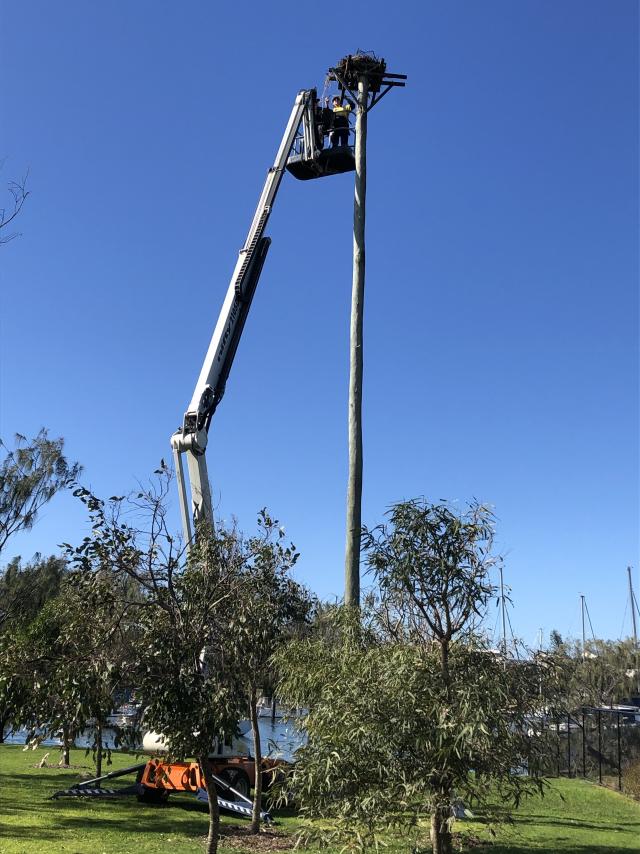Mooloolaba’s well-loved ospreys are all set to be comfy, cosy and safe for the upcoming breeding season, thanks to a home renovation by Sunshine Coast Council.
Council recently worked with expert wildlife habitat contractors to install additional support around the nest platform so it could better retain material during the birds’ breeding seasons.
The platform was built in 2006 when the pair’s original nest, located on a non-seaworthy barge which was partially sunk in the Mooloolah River.
Sunshine Coast Council natural areas team leader – technical Hetti Malone said council strived to find solutions that allowed our residents and wildlife to live together in harmony.
“Unfortunately, the osprey pair at Mooloolaba Spit had lost their nest to extreme weather on multiple occasions over the last several years,” Ms Malone said.
“With help from our community, council will monitor this nest closely and step in to assist as we are able.
“We sought expert advice on the platform structure from the University of the Sunshine Coast (USC) and Queensland Department of Environment and Science.
“The wildlife habitat contractor was able to manufacture and fit a timber kickboard around the boundary of the nest on site, and supply and fit an anti-climb collar on the pole to protect the nest and offspring.
“They were also able to remove fishhooks and lines from the existing nest for the safety of the ospreys.”
USC PhD candidate Taylor Cooper said ospreys were top predators and were essential for maintaining ecosystem health.
“This is a fantastic initiative by Sunshine Coast Council which will undoubtedly have wonderful results for the osprey community in Mooloolaba and is an excellent step forward to a successful breeding season for such an iconic and important coastal species,” Mr Cooper said.
“My PhD project involves identifying osprey pairs and nests to determine if other locations may require artificial nesting poles.
“This will form part of a broader project looking to establish distribution of coastal raptors on the Sunshine Coast, with a view to help manage their populations.“
Ms Malone said a full rebuild was on the cards in the future due to the age of the structure but that needed to wait until breeding season was over.
“Council will continue to monitor the integrity of the nest platform with a potential full replacement next year,” she said.
“We were very happy to see the breeding pair building their nest over the weekend.”
The platform was originally built in partnership with Maritime Safety Queensland and the Queensland Department of Environment and Science.








